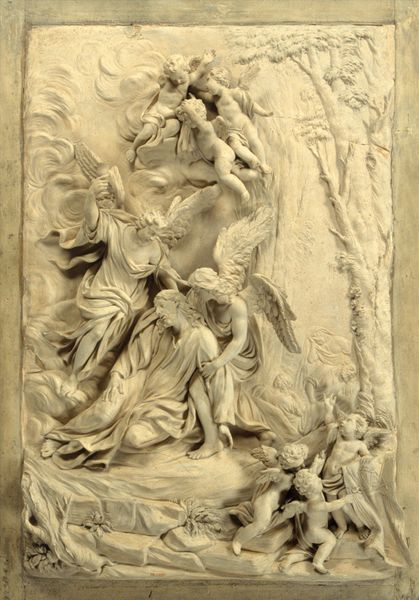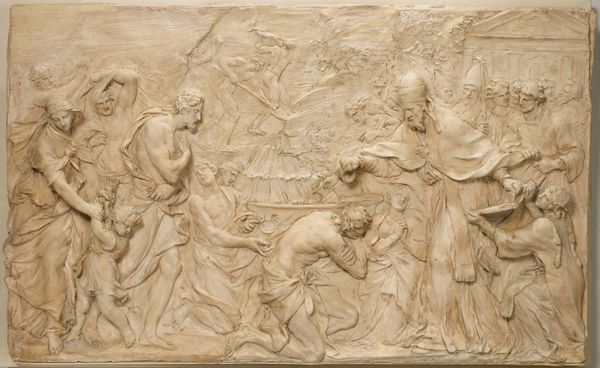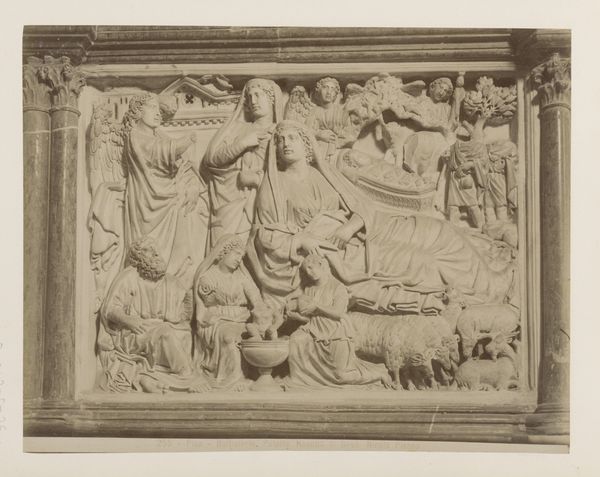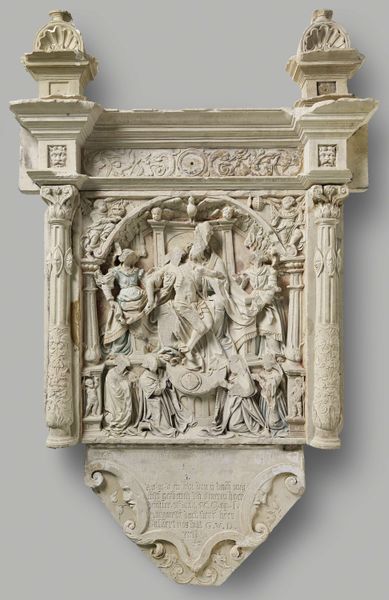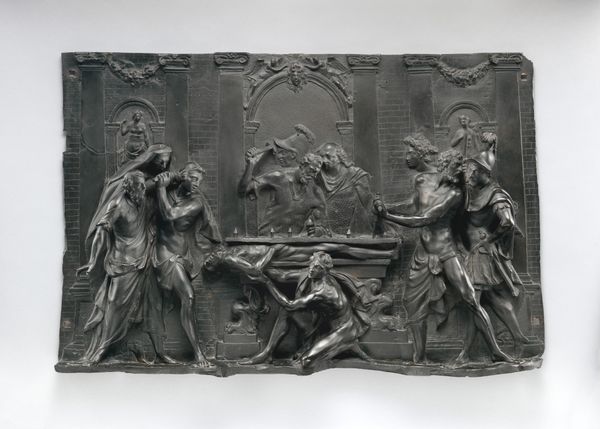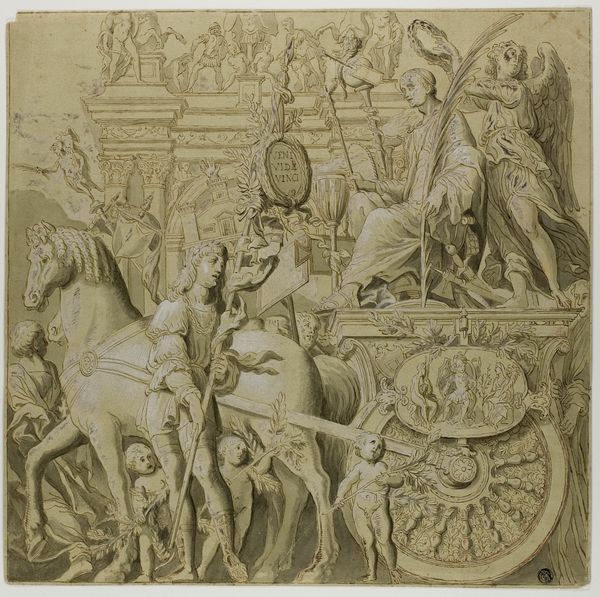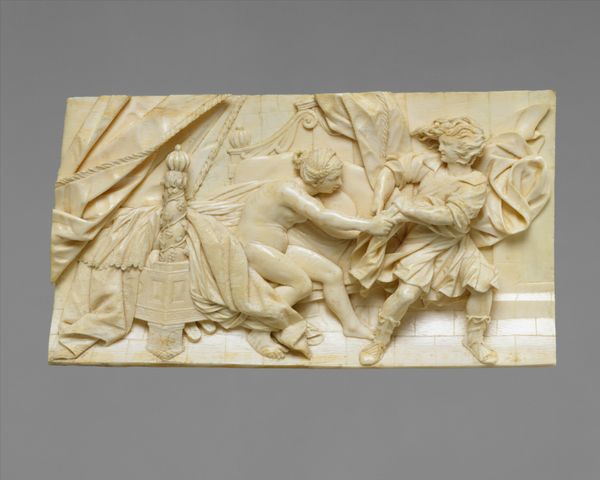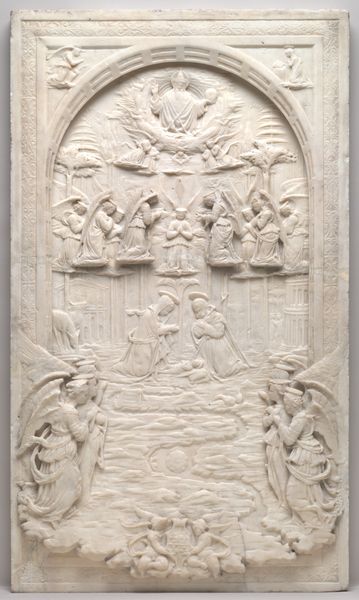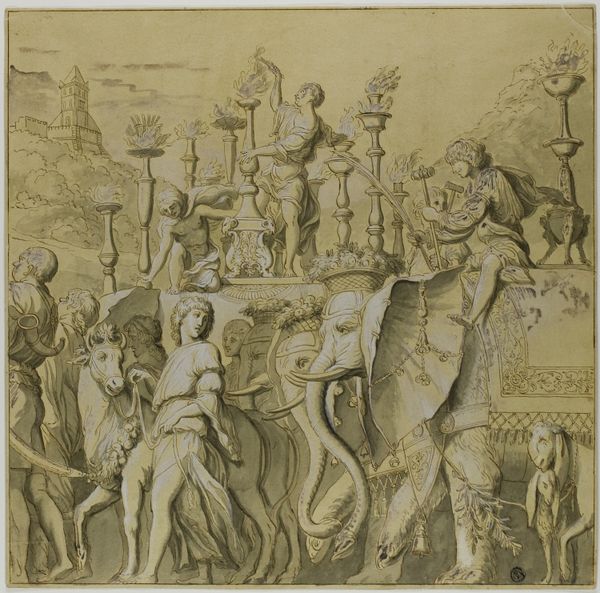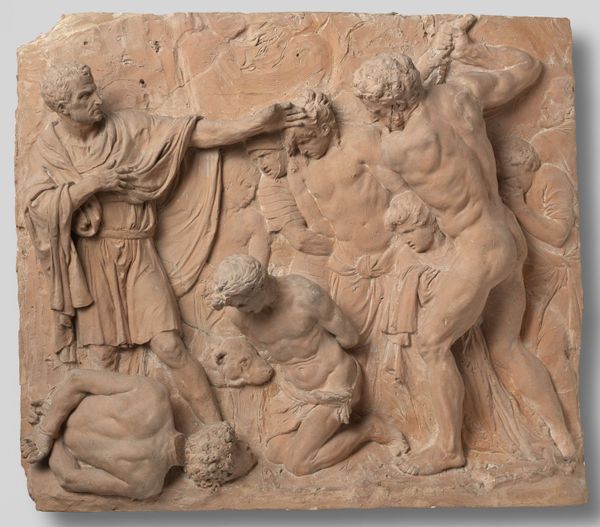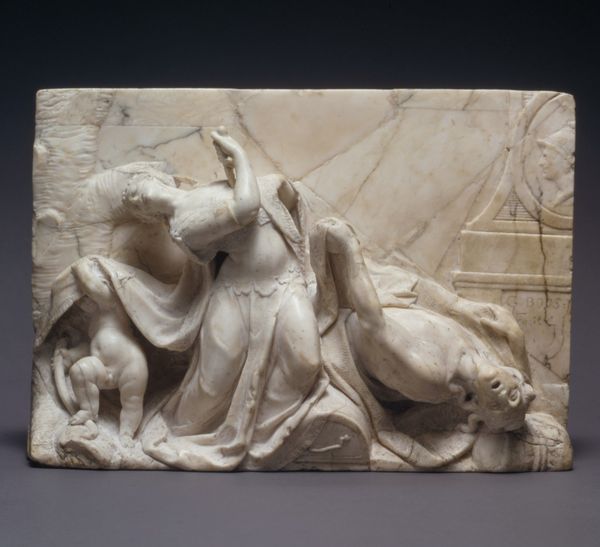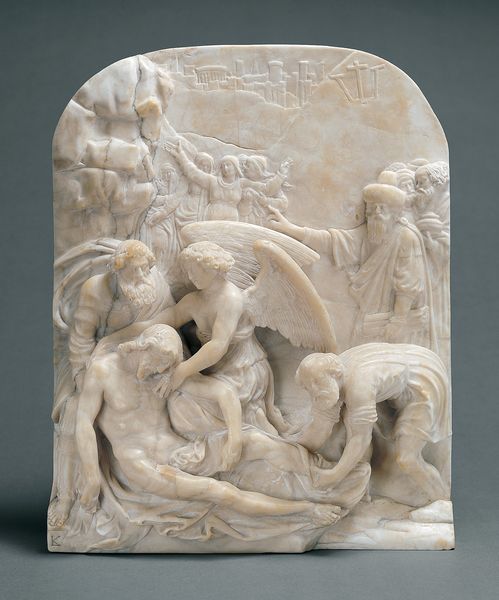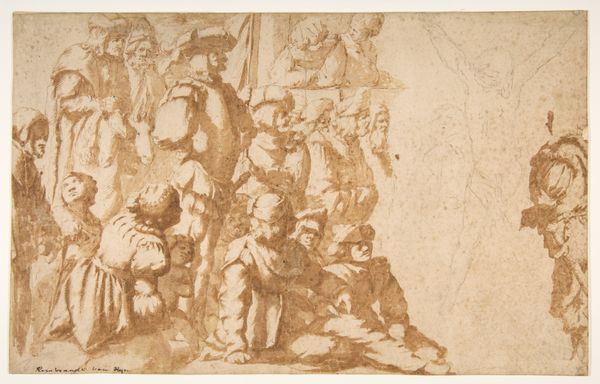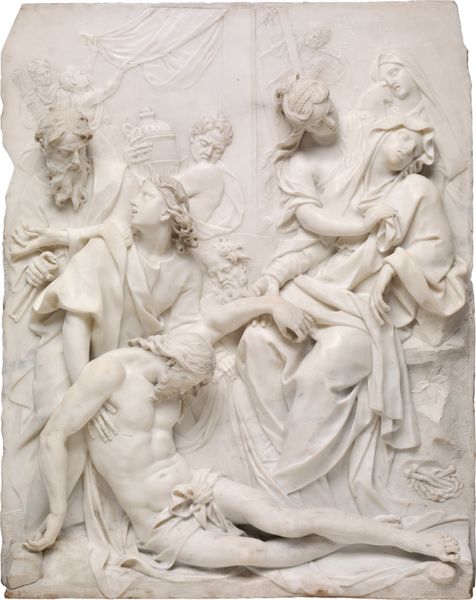
relief, sculpture, marble
#
narrative-art
#
baroque
#
stone
#
sculpture
#
relief
#
figuration
#
sculpture
#
human
#
history-painting
#
decorative-art
#
marble
Dimensions: 13 1/4 x 12 5/8 in. (33.7 x 32.1 cm)
Copyright: Public Domain
Curator: This dramatic marble relief, “The Flood,” was created by Michel Anguier between 1648 and 1649. It's a striking example of Baroque sculpture currently housed in the Metropolitan Museum of Art. Editor: My immediate reaction is one of overwhelming chaos and despair. The composition, although contained within a square frame, seems to explode outwards with dynamic figures caught in a moment of watery destruction. Curator: Indeed. The artist’s skill is evident in the way he manipulates the marble to convey such powerful emotion and movement. Observe the intricate details: the swirling water, the clinging garments, the expressive gestures of the figures. It’s a study in contrasts - the smooth, polished surfaces against the rough, textured areas, all contributing to a heightened sense of drama. Editor: The iconography is deeply compelling. The receding ark in the background – a symbol of salvation – feels distant and almost mocking amidst the immediate suffering. Note how many figures are struggling and drowning. The figures exemplify vulnerability. This feels far more pessimistic than hopeful. Curator: Consider how Anguier utilizes the principles of Baroque aesthetics: the dynamism, the emotional intensity, and the theatrical presentation of the narrative. The composition guides the eye, moving from the figures in the foreground to the receding space in the background, creating depth and a sense of overwhelming scale. Editor: I'm struck by the recurring visual motif of reaching, desperate hands – some grasping at anything for support, others reaching out to those they can't save. They become potent symbols of human vulnerability in the face of nature's overwhelming power. It speaks to our deep-seated fears of annihilation and the fragility of human existence. Curator: The choice of marble, while challenging to carve in such high relief, enhances the timelessness of the subject matter. It solidifies this scene of biblical catastrophe into a permanent visual record. The almost monochromatic color scheme directs the viewer to consider only form and content rather than allowing vibrant color to evoke potentially misleading emotional content. Editor: The details speak volumes; in every fold and contortion we see that this scene reflects profound anxieties. The visual vocabulary of Baroque sculpture has afforded us the opportunity to explore potent cultural anxieties through art. Curator: A powerful piece, skillfully rendered, that allows for complex readings across stylistic elements and human tragedy. Editor: A lasting image about how humanity reacts to overwhelming catastrophe, a relevant visual narrative to return to as we confront overwhelming change.
Comments
No comments
Be the first to comment and join the conversation on the ultimate creative platform.
